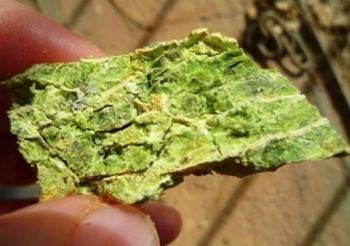In a period of less than 10 years beginning in the late 1990s, hundreds of millions of dollars evaporated in West Australia’s arid interior as investors gambled on complex metallurgical processes designed to extract nickel metal from the vast quantities of laterite ore lying unmined in the eastern goldfields.
Murrin Murrin, Cawse, Bulong, and Ravensthorpe – these were the names given to those first forays into hydrometallurgical processing on a grand scale.
Today, only the Murrin Murrin high-pressure acid leach (HPAL) plant, owned by Minara Resources, is open and operating profitably.
The other projects simply sucked in oodles of cash, choked on the laterite ores’ myriad impurities and collapsed into the embrace of a small coterie of grinning receivers.
Either that or the plants’ disillusioned founders placed them on care and maintenance before selling out to tight-fisted buyers specialising in distressed assets.
It was a massive shock. It might have relegated nickel laterite developments to the status of processing oddity. But the lure of laterite wouldn’t go away. And for that the mining industry can thank supply and demand.
In May 2007 nickel prices on the London Metal Exchange peaked at well above $US 51,000 per tonne as the Chinese-fuelled commodity boom was leveraged beyond reason by speculators. In desperation smelters and mills turned to inferior, substitute alloys to make their stainless steel.
Nickel teetered on a price precipice. And then the global credit crunch sent it crashing. By early 2009 the unwanted alloy was trading below $US 10,000 per tonne.
But demand for stainless steel is expected to grow faster than supply for years to come. Figures from the Australian Bureau of Agricultural and Resource Economics (ABARE) show Australian nickel production for 2010 was down 15% on the previous year. Further, RBC Capital Markets has forecast nickel demand will grow by 8.4% in 2011 and 9.5% in 2012.
What’s more, most nickel is sourced in Australia from so-called sulphide ores that are becoming more costly to extract as miners chase old lodes deeper underground. If nickel could be liberated from the abundant shallow laterites more cheaply than current methods allow, then Australia, which possesses enormous reserves of nickel laterite, could enjoy a second, sustainable revival.
Which is where Sydney-based private company Direct Nickel and the CSIRO come in.
Direct Nickel believes it has developed a processing method that can strip nickel from laterites at a fraction of the cost of current methods. The CSIRO, which owns equity in the company, is contributing to the building a pilot plant to test the process at its facility in Waterford, Perth. And the secret to Direct Nickel’s simplicity and low cost process is recycling.
The CSIRO’s Dr David Robinson told IndustrySearch.com.au one of the Direct Nickel processes’ most attractive features is that almost all of the reagents used in the process is recyclable.
"You have to buy enough (reagent) to get the plant going but top up costs are relatively small because it’s such a small amount of top up required," he said.
The potential of a cheap process is enormous. HPAL processing requires the laterite ore to be treated using large amounts of sulphuric acid pressurised in immense autoclaves.
Relatively small rises in sulphur prices can render an HPAL plant uneconomic. Storing the dangerous wastes adds to the cost.
Julian Malnic, executive chairman of Direct Nickel expects the Waterford pilot plant to be commissioned and test treating laterite ore by first quarter 2012. In the meantime, he is working on securing up to $15 million in additional capital – they have already raised $22 million – through a cornerstone investor with its own nickel laterite deposit. He is also pursuing a listing on the Australian Securities Exchange (ASX).
"At the moment we’ve gotten along very well as a private company and I think we’ve come to the conclusion that the time has come for a listing," he said.
"We’re doing a reverse takeover and have a shell identified and I would expect we will be a public company in about three months from now."


